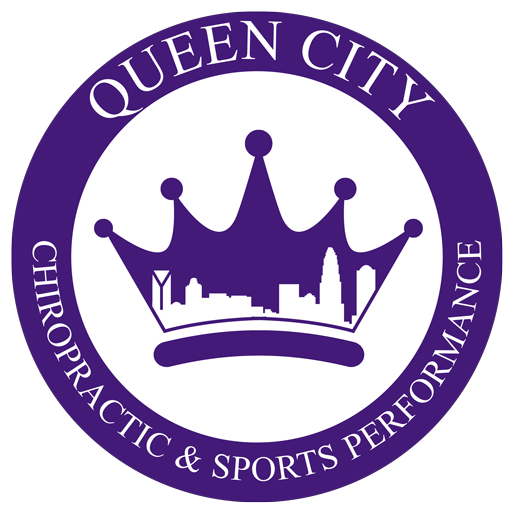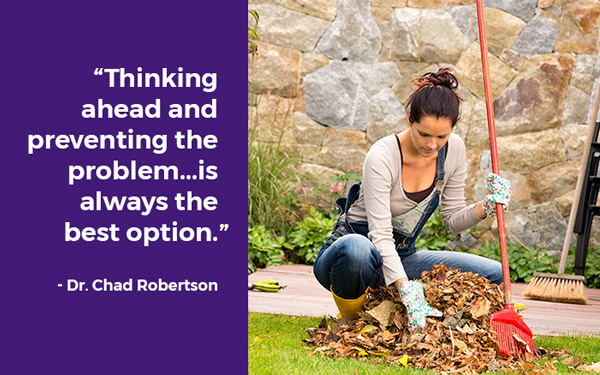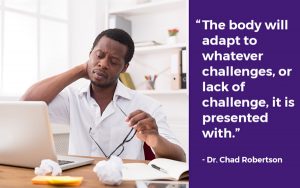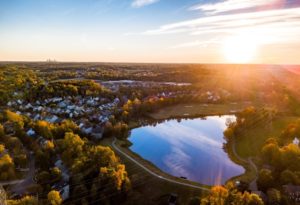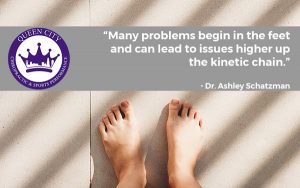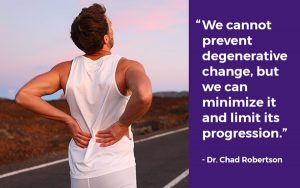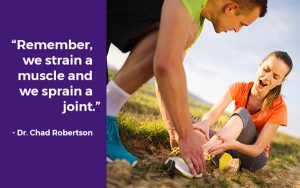The holiday season is once again upon us. With the many pleasant festivities that this time of year offers, along with the vibrant change of season, we are also presented with the burden of some less desirable tasks such as yard work and winter home preparation.
Autumn is one of my favorite seasons of the year with the warm days and cool nights but as our focus shifts toward winter, the cold weather can complicate the body’s capability to accomplish our necessary household chores.
Although Queen City Chiropractic & Sports Performance is always busy helping patients, the fall and winter months provide our busiest days for patient visits. The colder weather alone allows people to feel their aches and pains a lot easier than summer, so our appointment times tend to fill up a lot faster during the cooler months. Activities such as raking leaves, trimming shrubs, collecting debris and (dare I suggest) shoveling snow can easily provide aggravation for spinal muscles that are not accustomed to these infrequent activities.
Not unlike your favorite athletic activity or exercise routine, quick or jerking movements can pose a danger to the body’s soft tissue. Cooler temperatures only enhance this risk for injury or soreness. When you confront the urge to accomplish fall or winter outdoor tasks, don’t just jump right in to performing an activity you haven’t done in months, take some steps in advance to limit the potential for injury.
Don’t Forget the Water
If your plans include a prolonged period of activity, hydration prior to starting that job can be essential. A basic guideline for daily hydration includes twice the amount of water in ounces as your body weight in pounds. That is a great tip for daily hydration but how many of us prepare for our activity by hydrating in advance?
Very few people think to drink before they plan to become active. If you expect to break a sweat, you should increase your intake of fluids a minimum of 20 oz, 60 minutes prior to your initiation of work or activity.
Water alone is fine, there is no specific need for sports drinks unless your increased activity level will exceed 2 hours because there is no immediate need to replace electrolytes from prolonged or intense sweating. Atmospheric conditions such as elevated temperature or high humidity may require additional hydration considerations.
According to Livestrong.com, muscles are comprised of up to 75% water and need additional water intake to maintain ideal function during periods of activity. Too often we wait until we are hot or thirsty before we reach for a drink and by then, it could be too late to prevent muscle soreness or metabolic compensation that can lead to cramping.
6 Point Plan to Follow When Working in the Yard
Once you have taken the pre-activity steps to hydrate, as suggested by the American Chiropractic Association, keep the following in mind to minimize the risk for injury while performing yard work.
- Use ideal footwear with good tread. This provides a stable base while reducing the strain placed on the lower back from improper arch support.
- Always take the time and consideration to utilize proper posture and positioning. Proper posture provides ideal positioning for the body to work efficiently with as little strain as possible against the effects of gravity. This can be important when using machinery or working in an awkward position. Make every attempt to maintain an upright and balanced position.
- When raking or trimming foliage, use a fencer’s or scissor-stance. By alternating your feet with one ahead and one behind the center of your body, you can alter your body height by bending the knees together and the wider base will help reduce strain on the spine.
- Bend the knees. We have all heard this advice but too often we fail to utilize this recommendation which can often contribute to back pain. Bending and twisting are the spine’s least favorite motions but when those activities are required, bending both the knees and the back can reduce strain. Never lift and twist simultaneously. Lift and then turn takes a second longer to accomplish but your back will appreciate this accommodation.
- Making several small piles of debris or leaves is often easier than one larger pile to collect. Additional piles may sound counterintuitive but remember less is more and several small mounds places less strain on the back than struggling to clean up one large pile.
- Listen to one’s body. When a break is needed, listen to your body attempting to speak to you. If time is short, switch activities to avoid down time but failure to take a break or change activities can be an easy way to provoke injury.
Additional Tips to Minimize the Risk of Injury
One simple strategy some people overlook includes making the equipment work for you, don’t work for it. Most hand-held machines such as trimmers, blowers and hedge clippers offer a variety of settings to accommodate to various sized operators and help improve ergonomics. Adjust the handles, straps or guards to fit your size and minimize the strain placed on the spine and muscles.
Whenever possible use a shoulder strap to stabilize the weight of the machine across the shoulders and maintain a better center of gravity. Don’t be afraid to alter the direction or pace in which you complete your task. Unilateral movements along with the vibration of the machine itself can contribute to fatigue at a faster pace and fatigued muscles become injured muscles easier.
Alternate your stance, positioning and direction often. When you cannot maintain the proper positioning or balance for longer than a minute without having to compromise on your ergonomics or re-position, its likely time to take a break.
Consider the time of day you are in best form to complete your tasks. If you are stiff in the morning, wait and complete your chores later in the day. The same can be said if you feel sore in the afternoon, complete your tasks earlier in the day to avoid problems later in the day.
Also consider the weather, some summer storms arise quickly but usually we have advanced notice of the weather and temperature so plan your work accordingly. When a person rushes to complete a task against mother nature, we often lose that challenge 100% of the time and when we work too fast or rush is often when accidents occur because our quality of movement is compromised.
Stretching is not just for sports training
Don’t forget to stretch both before and after activity. Some people think to stretch in advance of their activity but few consider the need to do so after they are active. Failure to stretch after activity can lead to a build-up of inflammatory factors inside the muscle and contribute to DOMS, or delayed onset muscle soreness. DOMS is the term for the characteristic discomfort that arrives 1-3 days following an uncommon or excessive activity.
Preventative stretching does not have to be complex or specific. Consider the actions you are about to perform and move those areas of your body that will be involved in completing those tasks. Simple ideas should include stretching the legs, back, shoulders and neck. Remember stretching should be performed slow and steady, try to avoid a “bouncing” or ballistic stretch while holding for a minimum of 20 seconds is a good rule of thumb. Breathe throughout the hold of a stretch and elongate the muscles to a point where it is mildly uncomfortable but never painful, a painful stretch is usually a harmful stretch.
Repeat each stretch a minimum of three times while trying to increase the intensity of the stretch mildly each set. Don’t forget to stretch both sides and in multiple directions. For specific questions on stretching or what stretches are proper for you, feel free to ask myself of Dr. Ashley on your next office visit. Flexibility protocols are an important component of all our treatments plans.
Pre-hab vs Rehab
Finally, don’t overlook the importance of your regular chiropractic visits. Although you’re always welcome, don’t wait until after you become sore to come in and seek relief. The best approach would be to consider a visit before you plan to tackle your yard chores. Consider it like pre-hab versus rehab. Preventing an issue is always easier to accomplish than recuperating an injury.
A chiropractic visit can help reduce the pressure already present in your spine from daily stress and allow your body to work at its most efficient state. This is most important when you plan to encounter activities or movements that your body is unfamiliar or unaccustomed to performing regularly. Chiropractors are musculo-skeletal experts who specialize in helping people heal from muscle and joint injuries. However, we also focus on helping our patients prevent problems from ever occurring so you can lead a healthy, active lifestyle without allowing soreness and stiffness from slowing you down.
At Queen City Chiropractic & Sports Performance we strive to help our patients perform at their best regardless of what challenges they face. Treating the problem is occasionally the best approach but thinking ahead and preventing the problem from ever arising is always the best option.
Happy Autumn and cheers to pain free yard work this season!

